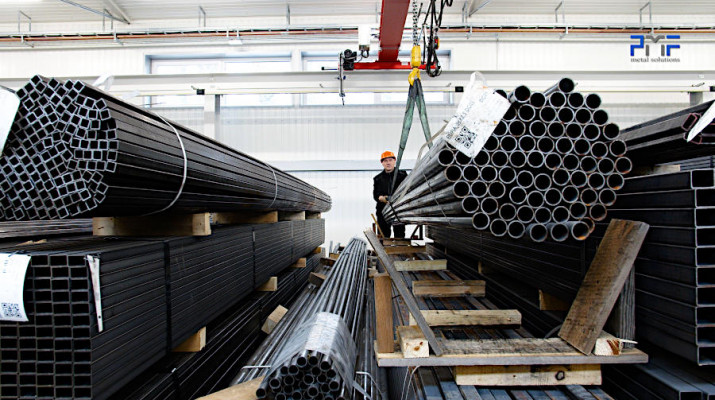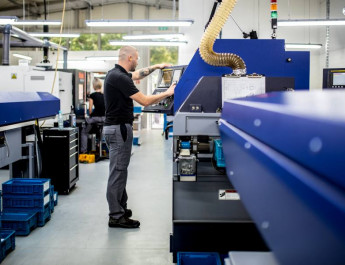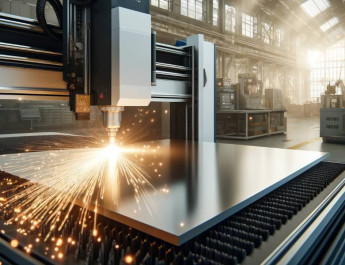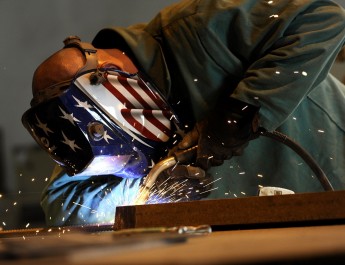Metal processing is a critical component of various industries, from automotive manufacturing to aerospace engineering. In today’s fast-paced world, efficiency, precision, and innovation are the driving forces behind every successful metal processing plant. This article delves deep into the world of metal processing plants, exploring their services, technologies, and the pivotal role they play in shaping modern industries.
Metal Processing: The Heartbeat of Industrial Advancement
In the realm of modern manufacturing and construction, metal processing plants serve as the lifeblood that fuels progress. These facilities are the epicenters of innovation, employing cutting-edge technologies to transform raw metal materials into a wide array of components and structures. Among the key services provided by these plants are robotic welding, laser cutting of sheet metal, laser cutting of pipes and profiles, and the bending of sheet metal.
Robotic Welding: Precision at Its Finest
Robotic welding has revolutionized the metal processing industry. This technology involves the use of automated systems equipped with welding tools to join metal parts together with unparalleled precision. The advantages of robotic welding in metal processing are manifold:
- Precision: Robots can execute welds with remarkable accuracy, reducing the need for rework and ensuring consistently high-quality results.
- Speed: Robotic systems work tirelessly without fatigue, leading to faster production cycles and increased throughput.
- Safety: By eliminating the need for human welders in hazardous environments, robotic welding enhances workplace safety.
- Cost-efficiency: Reduced labor costs and minimal material wastage make robotic welding a cost-effective choice.
Robotic welding has become a cornerstone of metal processing, enabling manufacturers to meet stringent quality standards while optimizing production efficiency.
Laser Cutting of Sheet Metal: Precision Through Light
Laser cutting is another indispensable technique in the metal processing toolkit. It utilizes high-powered lasers to precisely cut intricate shapes and designs from sheet metal. This technology has gained widespread popularity for several compelling reasons:
- Precision: Laser cutting offers micron-level accuracy, ensuring that even the most intricate patterns are executed flawlessly.
- Versatility: It can be applied to a wide range of metals, from steel and aluminum to titanium and copper.
- Speed: The high cutting speeds of lasers translate into shorter lead times for metal processing projects.
- Minimal Material Distortion: Unlike traditional cutting methods, laser cutting minimizes heat-affected zones, reducing material distortion.
In the world of metal processing, where precision and efficiency are paramount, laser cutting has emerged as a game-changer.
Laser Cutting of Pipes and Profiles: Shaping the Future
While laser cutting of sheet metal is a well-established technique, the laser cutting of pipes and profiles represents a newer frontier in metal processing. This technology allows for the precise shaping and customization of various metal profiles, such as tubes, beams, and channels. Key advantages include:
- Complex Geometries: Laser cutting can create intricate cuts, holes, and notches in pipes and profiles, facilitating the assembly of complex structures.
- Reduced Waste: The minimal kerf width of laser cutting reduces material waste, contributing to cost savings.
- Versatility: It accommodates a wide range of materials and profiles, making it suitable for diverse industries.
- High Throughput: Laser cutting machines designed for pipes and profiles are capable of high-speed processing, increasing productivity.
As industries continue to demand complex and customized metal components, the laser cutting of pipes and profiles is poised to play a pivotal role in metal processing.
Bending of Sheet Metal: Shaping Possibilities
While cutting and joining metal are essential steps in metal processing, the bending of sheet metal is equally vital. This process involves the deformation of flat metal sheets into desired shapes and angles. Metal bending is a critical step in the creation of a wide variety of products, from automobile chassis to architectural components. Here’s why it’s indispensable:
- Design Flexibility: Bending allows for the creation of curved, angular, and three-dimensional shapes, enabling designers to push the boundaries of creativity.
- Strength and Durability: Bent metal components often exhibit enhanced structural integrity, making them ideal for load-bearing applications.
- Cost-Effective: Compared to fabricating complex shapes through welding or casting, bending can be a cost-effective alternative.
Metal processing plants equipped with state-of-the-art bending machinery can transform flat sheets into functional and aesthetically pleasing components.
The Role of Automation in Metal Processing
Automation has emerged as a key driver of efficiency and productivity in metal processing plants. Whether it’s robotic welding or laser cutting, automation technologies have revolutionized the industry in several ways:
Enhanced Precision
Automation systems are programmed to perform tasks with incredible precision, reducing human error and ensuring consistently high-quality output. In the case of laser cutting, for example, automated systems can follow complex design specifications with pinpoint accuracy.
Increased Efficiency
Automation allows for continuous operation, eliminating the need for breaks or shift changes. This leads to shorter production cycles and increased throughput, which are critical in meeting the demands of modern industries.
Improved Safety
By reducing the need for manual labor in hazardous environments, automation enhances workplace safety. Robotic welding, for instance, minimizes the risk of exposure to harmful fumes and high temperatures.
Cost Savings
While the initial investment in automation technology can be substantial, the long-term cost savings are significant. Reduced labor costs, minimal material wastage, and decreased rework expenses contribute to a healthier bottom line.
The Future of Metal Processing
The metal processing industry is on an evolutionary trajectory, driven by technological advancements and the ever-increasing demands of modern manufacturing and construction. Several trends are shaping the future of metal processing plants:
Smart Manufacturing
The integration of sensors, data analytics, and artificial intelligence is transforming metal processing into a smart manufacturing endeavor. This enables real-time monitoring and predictive maintenance, reducing downtime and optimizing production.
Green Initiatives
Sustainability is a growing concern in metal processing. Many plants are adopting eco-friendly practices, such as recycling and reducing energy consumption, to minimize their environmental footprint.
Materials Innovation
Advancements in metallurgy are expanding the range of materials available for processing. High-strength alloys, lightweight metals, and composites are becoming increasingly prevalent, offering new opportunities and challenges for metal processing.
Customization and Personalization
Consumer preferences for customized products are pushing metal processing plants to offer greater flexibility and shorter lead times. Technologies like 3D printing are poised to play a role in achieving this goal.
Heroes Behind the Scenes
Metal processing plants are the unsung heroes behind the scenes, shaping the products and structures that underpin our modern world. From robotic welding to laser cutting of sheet metal, laser cutting of pipes and profiles, and the bending of sheet metal, these facilities are at the forefront of technological innovation.
As we look to the future, metal processing will continue to evolve, driven by automation, sustainability, materials innovation, and the demand for customization. The metal processing industry is not just an integral part of modern manufacturing and construction—it’s a dynamic and ever-evolving force that will continue to shape our world. So, the next time you encounter a precision-engineered metal component, remember that it likely passed through the skilled hands of a metal processing plant, where innovation and technology come together to create excellence.




